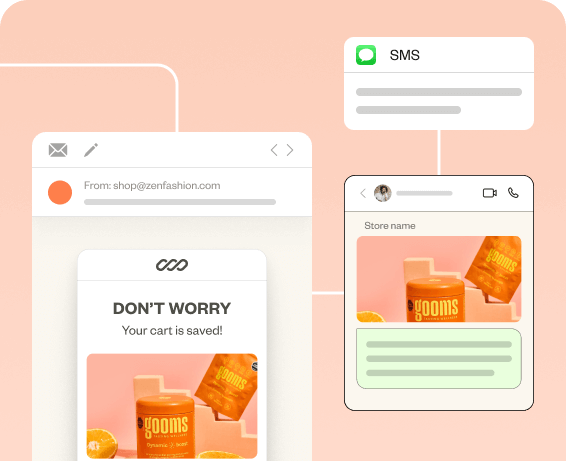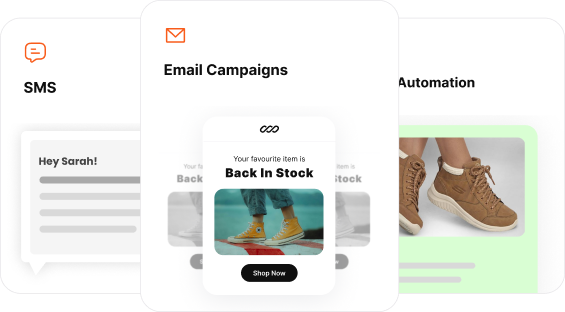For eCommerce businesses, abandoned carts are more than just a minor annoyance—they’re lost revenue opportunities that, if properly addressed, can be converted into sales. According to studies, the average cart abandonment rate across industries ranges from 60% to 80%.
That means more than half of potential purchases are never completed. While many factors contribute to this, from unexpected shipping costs to complicated checkout processes, one critical solution often goes overlooked: offering financing options as part of your abandoned cart recovery strategy.
This article explores why financing offers should be an integral part of your recovery sequence, and how implementing them can boost conversion rates, improve customer satisfaction, and increase your bottom line.
Understanding abandoned cart recovery
Before diving into financing, it’s essential to understand what abandoned cart recovery is and why it matters. It refers to the process of re-engaging customers who added products to their shopping cart but left your website without completing the purchase. This can be done through automated email sequences, retargeting ads, or personalized notifications.
Effective abandoned cart recovery strategies help businesses:
- Reduce lost sales
- Improve customer retention
- Gain insight into customer purchasing behavior
Typically, recovery sequences involve sending reminder emails or push notifications. While these are effective to some extent, adding incentives such as discounts, free shipping, or financing options can significantly increase the likelihood of conversion.
Why customers abandon carts
Understanding the reasons behind abandoned carts is crucial to crafting an effective recovery strategy. Some common causes include:
- Unexpected costs: Shipping fees, taxes, or additional charges at checkout can surprise customers.
- Price concerns: Many customers leave a purchase because the total cost exceeds their immediate budget.
- Complex checkout processes: Multiple steps, mandatory account creation, or confusing forms can discourage buyers.
- Uncertainty or need for time: Some shoppers abandon carts to compare prices or rethink their purchase.
Among these, price concerns are particularly relevant for high-ticket items or larger purchases. Here’s where financing offers play a pivotal role. By giving customers flexible payment options, businesses can remove the price barrier and turn potential lost sales into completed purchases.
The psychology behind financing in abandoned cart recovery
While the technical side of abandoned cart recovery focuses on timing, segmentation, and messaging, understanding buyer psychology can make your strategy far more effective. Financing taps directly into emotional and cognitive factors that influence purchase behavior.
1. Reduces the pain of paying
When faced with a large upfront cost, shoppers experience what behavioral economists call the “pain of paying.” By spreading the payment into smaller, more manageable installments, flexible payment options minimize that discomfort. This makes customers feel better about completing the transaction.
2. Makes big purchases feel achievable
Breaking down a total price into smaller monthly payments changes how people perceive affordability. A $1,000 item suddenly feels more accessible when presented as “$83 per month.” This reframing lowers psychological resistance and helps hesitant customers finalize their purchase.
3. Triggers positive emotions
Financing gives shoppers a sense of control and empowerment—they can buy what they want without immediate financial strain. That positive feeling can shift their mindset from hesitation to excitement, increasing the likelihood of completing the checkout process.
4. Leverages instant gratification
Consumers naturally crave immediate rewards. Financing satisfies that impulse by allowing customers to enjoy a product or service now and pay later. In your recovery messaging, highlighting this “buy now, pay later” benefit can be especially persuasive.
By understanding these psychological triggers, your cart recovery emails and reminders can connect on an emotional level, turning indecision into confident purchase action.
The role of financing options in abandoned cart recovery
Integrating financing offers into your cart recovery sequence can make a substantial difference. Here’s why:
1. Addressing price sensitivity
Many customers abandon carts simply because they cannot afford the full payment at the moment. Flexible payment options allow them to split the total cost into smaller, more manageable payments. By presenting these options in your abandoned cart emails or recovery notifications, you remove the immediate financial hurdle that prevents them from completing the purchase.
2. Boosting conversion rates
on. Shoppers are more likely to finalize their purchase when they see an opportunity to pay over time rather than in a single transaction. This is particularly true for big-ticket items such as electronics, furniture, or home improvement products.
3. Enhancing customer experience
Offering flexible payment options demonstrates that your business understands customer needs. This can improve the overall shopping experience and foster loyalty. Customers are more likely to return for future purchases if they know they have payment flexibility.
4. Standing out from competitors
Many eCommerce sites still rely solely on discounts or free shipping as abandoned cart incentives. By incorporating financing offers, your business differentiates itself, appealing to a wider audience and positioning itself as customer-friendly and innovative.
How to include financing in your recovery sequence
Successfully incorporating pos financing options into your abandoned cart recovery strategy requires a thoughtful approach. Here’s a step-by-step guide:
Step 1: Segment your abandoned cart users
Not all customers respond the same way to flexible payment options. Identify high-value items or higher-priced purchases and target customers who abandoned these carts. Segmentation ensures your financing messaging reaches those most likely to benefit from it.
Step 2: Craft persuasive messaging
When including financing offers in your emails or notifications, focus on clarity and simplicity. Highlight the key benefits:
- Low monthly payments
- Interest-free periods (if applicable)
- Fast and easy application process
For example:
“Complete your purchase today with easy monthly payments—no interest for the first 12 months!”
Keep the tone informative and encouraging without overwhelming the customer with too much information.
Step 3: Place financing offers strategically
Where you present financing options matters. Common placements include:
- Abandoned cart emails: A clear mention of financing at the top or near the “Complete Purchase” CTA can catch attention.
- Checkout page: Offering financing before the final payment step can reduce last-minute abandonment.
- Retargeting ads: Highlight financing in ads shown to users who left items in their carts.
Step 4: Test and optimize
Regularly monitor how customers respond to financing messages. A/B testing different phrasing, visuals, or placement can reveal what works best for your audience. Track metrics such as click-through rates, conversion rates, and revenue recovered to refine your approach.
Best practices for promoting financing in cart abandonment recovery
To maximize the impact of financing options, follow these best practices:
1. Keep it simple
Avoid overwhelming customers with complex financial jargon. Use clear, concise language to explain how financing works and what benefits it offers.
2. Highlight transparency
Customers appreciate honesty regarding interest rates, fees, and payment schedules. Make these details easy to find to build trust and reduce hesitations.
3. Combine with other incentives
Financing options can be paired with other recovery strategies such as free shipping, small discounts, or limited-time offers. Bundling multiple incentives often increases the likelihood of conversion.
4. Use personalization
Personalized messaging resonates more with customers. Mention the items left in their cart and tailor flexible payment offers based on the product price or customer history.
5. Leverage urgency
Encouraging quick action can be effective. Phrases like “Reserve your items today with easy payments” or “Offer valid for the next 48 hours” can prompt customers to complete their purchase sooner.
Measuring the impact of financing on abandoned cart recovery
Once financing offers are integrated into your recovery sequence, it’s important to measure their effectiveness. Key metrics include:
- Recovery rate: Percentage of abandoned carts successfully converted into sales.
- Average order value (AOV): Financing often encourages customers to purchase more expensive items or add additional products.
- Customer retention: Assess whether customers who used financing return for future purchases.
- Conversion lift: Compare sales data before and after introducing financing in your recovery sequence.
Using these insights, businesses can adjust their strategies to maximize revenue recovery and improve overall eCommerce performance.
Conclusion
Abandoned cart recovery is an essential part of any eCommerce strategy, but simply sending reminder emails is no longer enough. Integrating financing options into your recovery sequence addresses a critical barrier—price sensitivity—while improving customer experience and boosting conversion rates.
By understanding your customers’ reasons for abandoning carts, strategically offering flexible payment solutions, and continuously optimizing your messaging, your business can recover more lost sales and generate higher revenue. Financing is no longer just a perk; it’s a powerful tool for turning potential losses into completed purchases.
Investing in abandoned cart recovery strategies that include financing is a smart, customer-centric approach. It not only drives immediate revenue but also builds trust, loyalty, and long-term growth for your brand.


